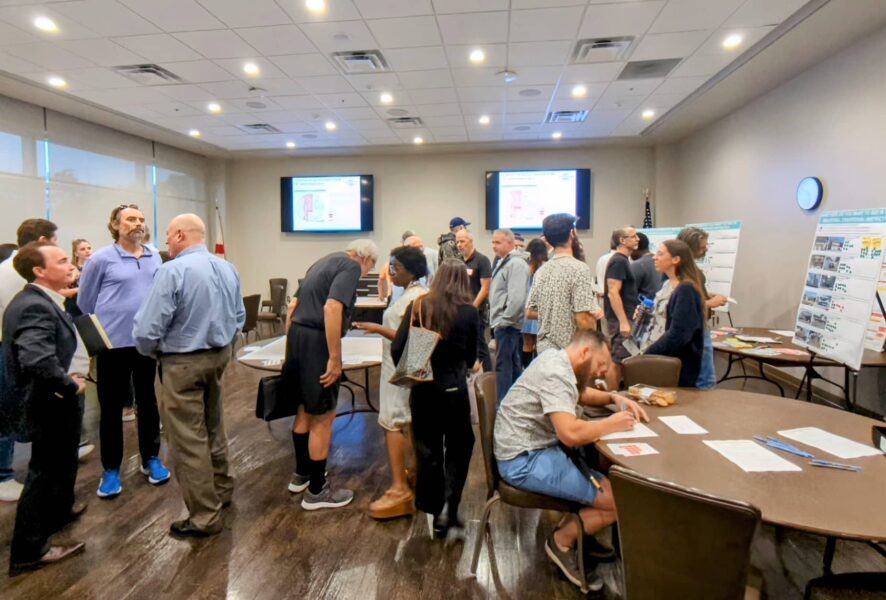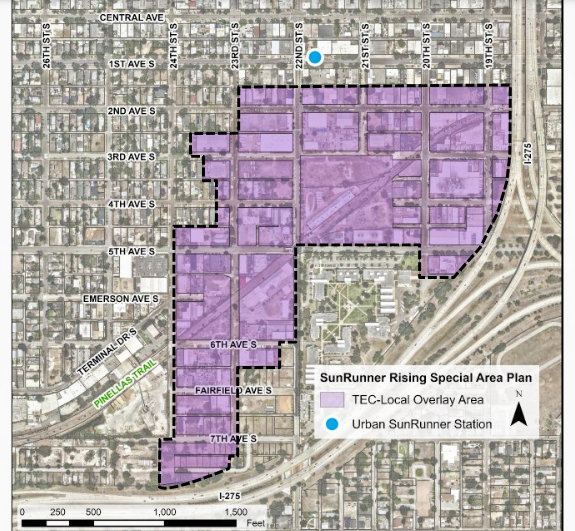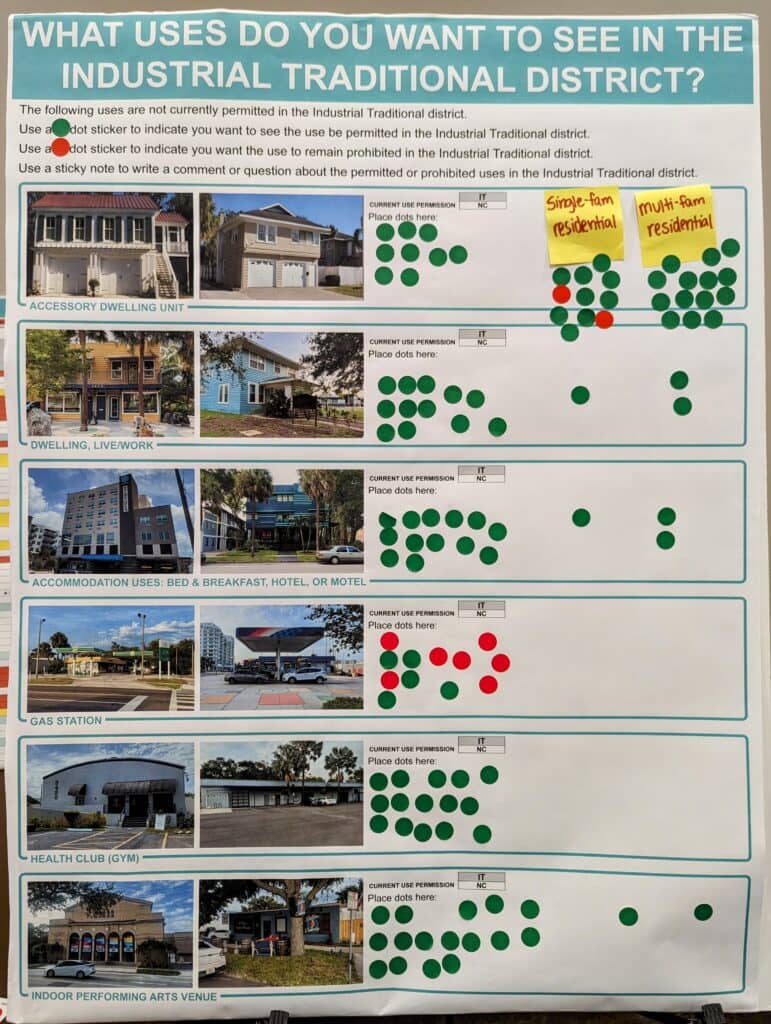Thrive
Transit-based zoning changes receive initial approval

St. Petersburg building officials recently approved long-awaited land-use changes that increase density and development opportunities in industrial-zoned areas around the region’s first bus rapid transit service.
The city’s Development Review Commission (DRC) unanimously approved code amendments May 1 that create a Target Employment Center zoning overlay around the 22nd Street South corridor and the Warehouse Arts District. The vote followed years of studies, planning and community engagement.
The city council must approve a plan that stakeholders believe will transform an underutilized area into a thriving urban environment. Commissioner Tim Clemmons said he admired their “sincere efforts” to create something “really special.”
“We’re moving towards creating a district here that’s not unique in the country, but it’s pretty rare,” Clemmons said. “This idea of not just combining living and shopping but also working in a way that, I think, is reflective of a 21st-century economy. That is really exciting to me.”

A map of the Target Employment Center overlay. Screengrab.
Community stakeholders have long advocated for increased connectivity, livability and job opportunities in the area. The October 2022 launch of the SunRunner aided those efforts.
City and Pinellas County officials commissioned the SunRunner Rising Development Study to discern how transit-oriented development (TOD) around the bus rapid transit system’s stations could spur revitalization. The target employment overlay encompasses the area south of 1st Avenue and west of I-275.
City documents state that the target employment center designation will “provide provisions to incentivize and retain small-scale manufacturers and artisan uses and address continued need for industrial and warehouse space.” Benefits include increased floor area ratio (FAR) and height allowances and reduced parking requirements.
Derek Kilborn, urban planning manager, said the zoning amendments would increase land-use flexibility around 22nd Street South, known as the Deuces, and the Warehouse Arts District. The changes support artists, homeowners wanting to build accessory dwelling units and myriad commercial developments.
The SunRunner Rising Study recommended allowing up to five-story buildings in the area. Planning officials increased the maximum height to 86 feet due to stakeholder feedback.

A graphic showing allowable building heights. Screengrab.
Kilborn said that would accommodate an eight-story building with ground-floor target employment uses that require higher ceilings. He explained that minimal setback requirements would foster a “more pedestrian-activated space with urban-like frontages to 22nd Street and the Pinellas Trail.”
Kilborn said design and streetscaping standards will increase connectivity. The amendments permit temporary commercial uses, including food trucks and roadside vendors. “This is expanded to allow different art and other types of products that might be manufactured on-site as part of the district, and those target those target employment uses,” he added.
Much of the hearing’s debate centered on parking requirements. Kilborn said those are less stringent than most commercial mixed-use districts.
He noted that city officials hope to encourage adaptive reuse by eliminating all parking requirements for target employers in existing buildings. The plan also reduces those constraints for other “transit-supportive” uses.
A housing unit encompassing less than 750 square feet will not require a parking space. Kilborn said that applies to multifamily developments.
Multiple public speakers suggested eliminating parking requirements throughout the area. Joe Furst advocated for increasing the base FAR standard from 2.0 to 2.5. Developers can receive a 5.0 allowance through target employment bonuses.

Attendees at the June 21, 2023, workshop favored (green dots) housing and performance venues in the industrially zoned area. Most did not support adding gas stations (red dots).
Furst, founder of Miami-based Place Projects, has helped lead a grassroots campaign to create a mixed-use environment since he bought over seven acres of perpetually underutilized land in the area in early 2019. “This has been a fascinating process,” he said.
“It’s actually some of my proudest work, given the amount of support we have, as you’ve seen from all the stakeholder letters and all the work that’s been done here.”
The city council will discuss feedback provided at the meeting before voting on the changes. Commission Chair Todd Reed also noted that local officials would periodically evaluate the plan after implementation.
“This has been a long time coming,” Reed said. “It would be a unique hub. I like the whole concept.”








tont
May 7, 2024at9:02 am
this district has always has so much local potential for a work/live balance- as long as large corp is not allowed to takeover – leave that for the Gas Plant/Trop project
Kari
May 7, 2024at5:56 am
This is fantastic news! Thanks to Joe Furst and all the hard working community advocates to make this happen.